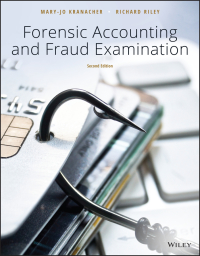Question
Use the following information for questions 16 28, each question is worth_________. Before attempting to answer the questions, set up an analysis based on the
Use the following information for questions 16 28, each question is worth_________. Before attempting to answer the questions, set up an analysis based on the given information. Bill owns a multi-tenant mixed-use property with a combination of retail, office, and residential. Bill purchased the property for $750,000 cash and invested an additional $150,000 three years ago. The land was valued at 20% of the original purchase price. The building was valued at $450,000 and building improvements (BI) as part of the original purchase were deemed to be $150,000 for depreciation purposes. Depreciation rates are 39 years for buildings and 15 years for BI. Bill uses a target rate of 15% to analyze cash flows. In the three years since he acquired the property, it has generated an average NOI of $162,250 annually, and average after-tax cash flow of $101,189 annually. The property is underperforming due to a vacancy rate of 30%. The property has six retail spaces at street level. Currently, four are occupied with net rent averaging 12,000 SF at a rate of $22/SF. Of the 144,000 available office space on floor two and three, 100,000 is leased at an average rate of $27. There 175 units averaging 1,100 SF renting at $1,500 per month. Of these, 124 are leased. There is another investor that has offered $950,000 to Bill for the property. Selling costs would be 6% of the selling price and paid from the proceeds. Bill has estimated he would need to invest an additional $750,000 to modernize the property to reduce the vacancy loss and increase the rates. Bill assumes he could reduce the vacancy and collection loss to 15% over the next five years by investing the money. He also believes he could reduce the Cap/Ex reserve from $200,000 to $100,000. To prepare the forecast, Bill holds rents to the current market over the five-year forecast period. Bill assumes the operating expenses will increase by 3% per year.
Question 16. What types of risk should Bill consider before analyzing the offer to sell the property? Select one: a. Business risk b. Management risk c. Tax risk d. All of the above e. Only A and B
Question 17. The before-tax cash flow (BTCF) from proposed the sale would be _______________. Select one: a. $902,328 b. $950,000 c. $893,000 d. $749,000 e. undeterminable from the available data
Question 18 The after-tax cash flow (ATCFS) from the proposed sale would be ________________. Select one: a. $799,000 b. $868,468 c. $805,386 d. any of the above could be correct depending on tax treatment e. none of the above
Question text
If the 3-year ATCF from operations and ATFCS were considered at the point of the original purchase, what would Bill's return on investment be?
Select one:
a. 4%
b. 8%
c. -8%
d. -4%
e. None of the above
Question 2
Using the information provided above, what would the expected property value be if Bill sold in year 6 at the 5th year ATCF is capitalized at 15% (nearest thousand).
Select one:
a. $3,906,000
b. $3,502,000
c. $4,120,000
d. $3,875,000
e. None of the above
21
Using the information provided above, what would the expected property value be if Bill sold in year 6 at the 5th year ATCF is capitalized at 30% (nearest thousand).
Select one:
a. $1,902,000
b. $2,106,000
c. $1,953,000
d. $2,077,000
e. None of the above
Question 22
Using the answer from question #8, what would be the return on investment, ignoring the 15% required return on the original purchase (nearest thousand).
Select one:
a. 120%
b. 183%
c. 60%
d. 25%
e. None of the above
Question 23
Using the answer from question #8, what would be the return on investment, adjusting for the 15% required return on the original purchase (nearest thousand).
Select one:
a. 120%
b. 183%
c. 60%
d. 25%
e. None of the above
Question 24
Using the answer from question #9, what would be the return on investment, ignoring the 15% required return on the original purchase (nearest thousand).
Select one:
a. 120%
b. 183%
c. 60%
d. 25%
e. None of the above
Question 25
Using the answer from question #8, what would be the return on investment, adjusting for the 15% required return on the original purchase (nearest thousand).
Select one:
a. 120%
b. 183%
c. 60%
d. 25%
e. None of the above
Question 26
Excluding the sale of the property and the adjustment for the 3 years from the point of purchase, what is the after-tax internal rate of return (ATIRR) on the cash flow from the reduced vacancy loss?
Select one:
a. 28%
b. 33%
c. 50%
d. 66%
e. 80%
Question 27
Excluding the sale of the property but including the adjustment for the 3 years from the point of purchase, what is the after-tax internal rate of return (ATIRR) on the cash flow from the reduced vacancy loss?
Select one:
a. 28%
b. 33%
c. 50%
d. 66%
e. 80%
Question 28
Given the above information, what would the marginal rate of return on equity (ATIRRe) be, including the adjustment for the 3 years from the point of purchase? Assume the capitalization rate would be 15%.
Select one:
a. 88%
b. 125%
c. 175%
d. 249%
e. None of the above
Step by Step Solution
There are 3 Steps involved in it
Step: 1

Get Instant Access to Expert-Tailored Solutions
See step-by-step solutions with expert insights and AI powered tools for academic success
Step: 2

Step: 3

Ace Your Homework with AI
Get the answers you need in no time with our AI-driven, step-by-step assistance
Get Started


